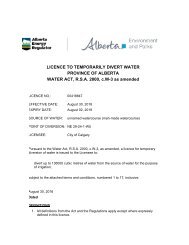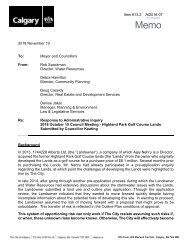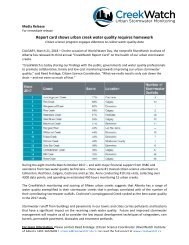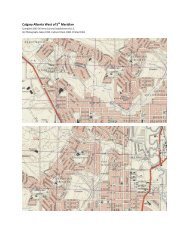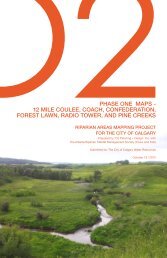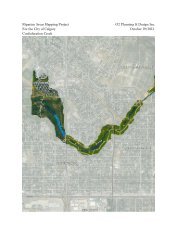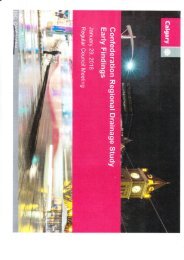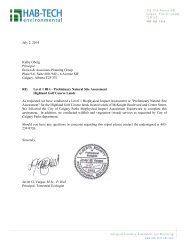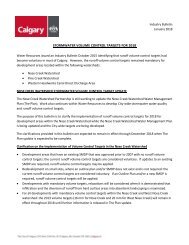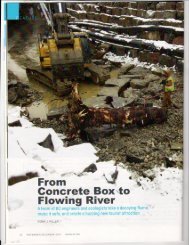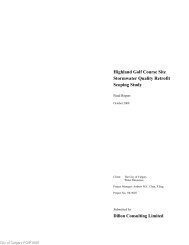World Water Day - the answer is in nature
Create successful ePaper yourself
Turn your PDF publications into a flip-book with our unique Google optimized e-Paper software.
3<br />
to r<strong>is</strong>e from 1.2 billion today to around 1.6 billion <strong>in</strong><br />
2050 – nearly 20% of <strong>the</strong> world’s population.<br />
• Today, around 1.8 billion people are affected by land<br />
degradation and desertification. At least 65% of forested<br />
land <strong>is</strong> <strong>in</strong> a degraded state.<br />
• An estimated 64-71% of natural wetlands have been<br />
lost s<strong>in</strong>ce 1900 as a result of human activity.<br />
• Soil erosion from croplands carries away 25 to 40<br />
billion tonnes of topsoil every year, significantly reduc<strong>in</strong>g<br />
crop yields and <strong>the</strong> soil’s ability to regulate<br />
water, carbon and nutrients. The runoff, conta<strong>in</strong><strong>in</strong>g<br />
large amounts of nitrogen and phosphorous, <strong>is</strong> also<br />
a major contributor to water pollution.<br />
as frequent extreme flood<strong>in</strong>g, can be mitigated by a range<br />
of NBS, such as riparian buffers or connect<strong>in</strong>g rivers to<br />
floodpla<strong>in</strong>s.<br />
The application of certa<strong>in</strong> NBS creates what <strong>is</strong> known as<br />
‘green <strong>in</strong>frastructure’: natural or semi-natural systems that<br />
give us equivalent or similar benefits to conventional, human-built<br />
‘grey <strong>in</strong>frastructure’.<br />
NBS often produce benefits beyond water-related services.<br />
For example, constructed wetlands used for wastewater<br />
treatment can provide biomass for energy production,<br />
improve biodiversity and create recreational spaces and<br />
associated employment.<br />
WHAT ARE NATURE-BASED SOLUTIONS (NBS)?<br />
Restor<strong>in</strong>g forests, grasslands and natural wetlands, reconnect<strong>in</strong>g<br />
rivers to floodpla<strong>in</strong>s, creat<strong>in</strong>g buffers of vegetation<br />
along water courses – <strong>the</strong>se are all examples of NBS that<br />
help <strong>the</strong> management of water availability and quality.<br />
Most NBS, <strong>in</strong>clud<strong>in</strong>g <strong>in</strong> urban landscapes, essentially <strong>in</strong>volve<br />
<strong>the</strong> management of vegetation, soils and/or wetlands,<br />
<strong>in</strong>clud<strong>in</strong>g rivers and lakes.<br />
NBS are not a panacea to <strong>the</strong> critical water-related challenges<br />
we face as <strong>the</strong> global population grows, but <strong>the</strong>y<br />
can provide <strong>in</strong>novative and cost-effective options for supplement<strong>in</strong>g<br />
<strong>in</strong>sufficient or age<strong>in</strong>g water <strong>in</strong>frastructure. For<br />
example:<br />
• <strong>Water</strong> availability and supply: <strong>Water</strong> storage via natural<br />
wetlands, soil mo<strong>is</strong>ture and/or groundwater recharg<strong>in</strong>g<br />
can be more susta<strong>in</strong>able and cost-effective than grey <strong>in</strong>frastructure,<br />
such as dams.<br />
• <strong>Water</strong> quality: Pollution from agriculture can be drastically<br />
reduced by NBS such as conservation agriculture, which<br />
protects soil from erosion, or riparian buffers, strips of land<br />
along water courses planted with native trees and shrubs.<br />
• R<strong>is</strong>k management: The effects of climate change, such



